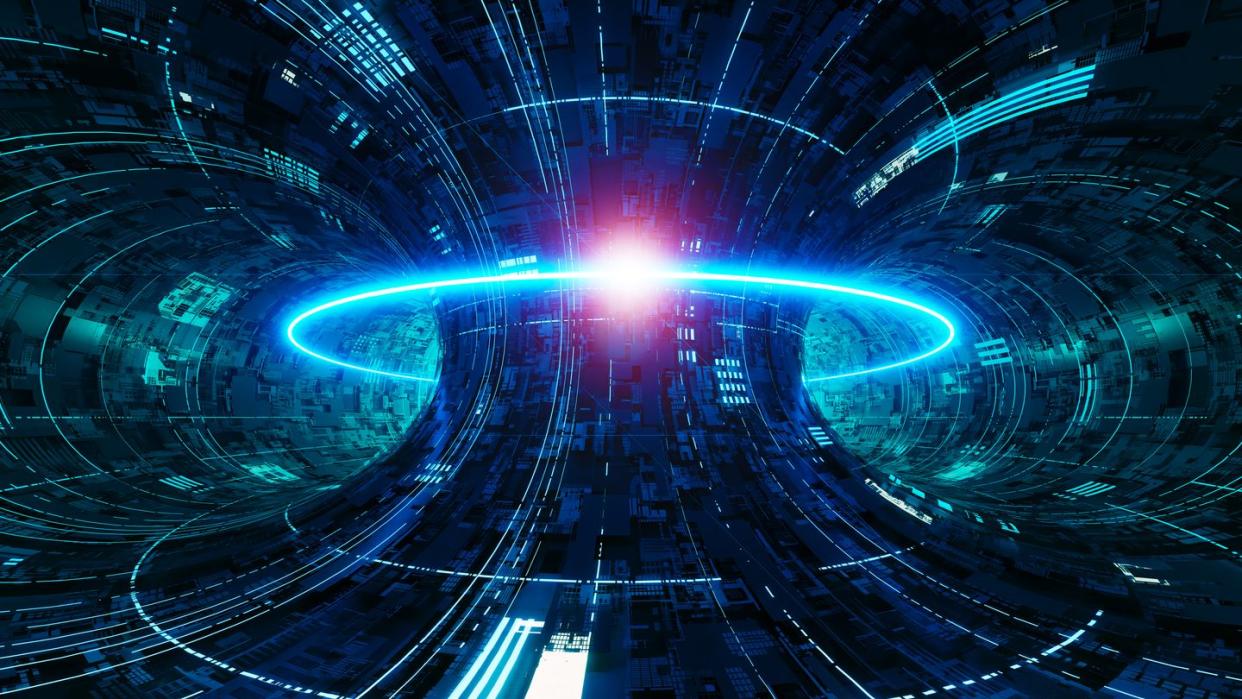A Fusion Reaction Generated Twice the Energy It Used for the First Time Ever. Game On.

On December 5, 2022, the National Ignition Facility in the U.S. achieved ignition by creating more energy via nuclear fusion than they originally put in.
Now, a series of details focuses on how that achievement came to be, and also highlights three subsequent ignition reactions—one of which produced almost double the amount of energy it used.
Investments in renewable energy could be vital to combating the climate crisis in the present day.
Although still a far-future technology, nuclear fusion is really hot right now, both literally and figuratively. Squishing together two light nuclei requires immensely hot temperatures (like, 100 million°C hot), and the fusion industry is similarly sizzling. More than 40 fusion companies now exist around the world—25 of which are in the U.S. alone.
One of the big drivers behind the immense excitement surrounding this futuristic energy-making venture is the fact that Lawrence Livermore National Laboratory’s (LLNL) National Ignition Facility (NIF) achieved “ignition” in December of 2022. This means that for the first time ever, scientists were able to create a fusion reaction that produced more energy than was used to create the reaction in the first place.
Yesterday, LLNL published a series of papers that go into detail about how exactly this major achievement took place and also talk about three other ignition moments that occurred throughout 2023—one of which produced almost twice as much energy as was initially put in.
“A fundamental obstacle to realizing a fusion energy source,” the researchers said in a press release, “has been the ability to control and heat a plasma (a mixture of ions and free electrons) to the conditions required for ignition and to confine the plasma at these conditions over long enough time scales such that more fusion energy is produced than was supplied to initiate the reaction.”
To put it very simply, nuclear fusion is like nuclear fission but in reverse. A fission reactor—the only kind of nuclear reactor used as an energy source today—splits Uranium-235 into two smaller atoms, specifically, barium and krypton. This releases energy that then creates steam and powers turbines. Fusion, on the other hand, happens on the other end of the nuclear binding energy curve. It uses two light nuclei, usually hydrogen isotopes deuterium and tritium, that then overcome the strong nuclear force and a subatomic quirk known as “quantum tunneling.” The resulting fusion creates a helium atom and most importantly energy thanks to that whole “e=mc2” thing.
Although there are many ways to achieve fusion (the Sun is pretty good at it, thanks to its immense gravity), the NIF uses a process known as inertial confinement. In using this method, 192 lasers converge on a hohlraum capsule that creates an X-ray bath. This squeezes the isotopes inside, which collapse at roughly 250 miles per hour, fuse, and release energy. Because the fusion reaction occurs before the fuel disassembles, the plasma is contained by its own inertia (hence the name).
On December 5, 2022, NIF produced 3.15 megajoules (MJ) despite only putting in 2.05 MJ (although this doesn’t account for the energy needed to run the entire facility, which is roughly 100 times greater than the energy that eventually reaches the capsule). Ignition—achieved.
In early August, the NIF announced that their second ignition successfully achieved higher yields than their historic first. While details were scant at the time, the paper reveals that 2.05 MJ of laser energy created 3.88 MJ, which is even higher than the two subsequent ignitions in 2023. However, these efficiencies are happening at a facility that wasn’t exactly designed to maximize output in the first place. Instead, achieving ignition in order to keep the U.S.’s nuclear deterrence safe and reliable is its primary goal.
“The NIF laser architecture and target configuration was chosen to give the highest probability for fusion ignition for research purposes and was not optimized to produce net energy for fusion energy applications,” the NIF said. “Inertial fusion energy applications requiring advancements to the underlying scheme require further development, such as laser energy usage, shot rate, target robustness, higher fuel compression levels, and cost.”
The fusion era is finally upon us. Laboratories regularly achieve ignition, international projects gear up for “first plasma” on groundbreaking experiments, and companies continue to invest in the energy source of the future—but not the energy source of the present.
While fusion energy is certainly exciting, it’s arriving too late to solve the current climate crisis. Research into this emerging field continues to grow, and as it does, so too must investments in the renewable energy technologies of today if we ever want to see a world powered by the physics of our own Sun.
You Might Also Like

